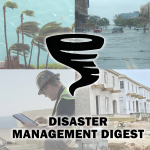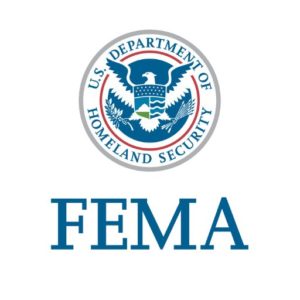Plus, the changing hurricane cone
 FEMA boasts a quick response to Hurricane Idalia victims with its Direct Housing Program, new FEMA rules mean slashing lots of red tape to help future disaster survivors even faster, and experts say the standard hurricane cone graphic on forecast maps is old news. It’s all in this week’s Disaster Management Digest.
FEMA boasts a quick response to Hurricane Idalia victims with its Direct Housing Program, new FEMA rules mean slashing lots of red tape to help future disaster survivors even faster, and experts say the standard hurricane cone graphic on forecast maps is old news. It’s all in this week’s Disaster Management Digest.

A partially crushed house from Hurricane Idalia in Perry , FL. Credit, Adrian Holt
FEMA Help After Hurricane Idalia: FEMA announced it had placed all households affected by Hurricane Idalia into temporary housing as of January 23rd, “in a remarkable display of efficiency” under its Direct Housing Program. Idalia made landfall on August 30 of last year, and only 40 days later FEMA was placing survivors into the first of their temporary homes. The streamlined process involved ordering, installation, utility hookup, and permitting either on affected private property or rented property in commercial parks. “Our Direct Housing team has been working tirelessly to accomplish one of the swiftest direct housing missions” said FEMA Federal Coordinating Officer Brett Howard, and the impact is apparent – three of the affected families from the storm have already moved back home after completing their Permanent Housing Plans. Over the next several months the rest of the affected families and households will do the same, per FEMA.
 Slashing Infamous FEMA Red Tape: Federal assistance is notorious for the arduous, bureaucratic application process it entails but new FEMA rules aim to cut through much of the red tape on its Individual Assistance Program. Homeowners who receive partial compensation for damages from their insurance can now ask FEMA to foot the rest of the bill – up to $42,500 – regardless of their total insurance payout. Gone is the requirement to have a loan application rejected by the Small Business Administration before applying for help from FEMA. The $750 critical needs assistance usually granted by FEMA on a case-by-case basis will now be readily available to those affected when an emergency is declared. FEMA has also made changes on how its displacement assistance funds are allocated to help with accessibility issues in homes and those unable to return to their homes. These changes will go into effect March 22, 2023 and will cost FEMA an estimated $671 million annually.
Slashing Infamous FEMA Red Tape: Federal assistance is notorious for the arduous, bureaucratic application process it entails but new FEMA rules aim to cut through much of the red tape on its Individual Assistance Program. Homeowners who receive partial compensation for damages from their insurance can now ask FEMA to foot the rest of the bill – up to $42,500 – regardless of their total insurance payout. Gone is the requirement to have a loan application rejected by the Small Business Administration before applying for help from FEMA. The $750 critical needs assistance usually granted by FEMA on a case-by-case basis will now be readily available to those affected when an emergency is declared. FEMA has also made changes on how its displacement assistance funds are allocated to help with accessibility issues in homes and those unable to return to their homes. These changes will go into effect March 22, 2023 and will cost FEMA an estimated $671 million annually.
 Changing the Cone Model: The familiar hurricane path cone used by the National Hurricane Center might look a little different in this upcoming hurricane season which officially starts on June 1. Experts have been examining public misconception and found that many people assume the cone graphic projection contains the entirety of the affected area; in reality, it only depicts a potential path for the storm center and eventual landfall. A recent study showed that people think of areas within the cone as “at risk” and everywhere outside as “safe” – a false perception that is now referred to as the “containment effect.” This effect often leads to people underestimating heavy winds and rain in the surrounding areas outside the cone. While hurricane predictions are often accurate enough to help inform the population, some 30-40% of the National Hurricane Center’s projections see the storm center veer outside of the initial cone. So beginning this summer, we’ll see instead active tropical alerts instead of a cone where applicable over land. The National Hurricane Center will seek feedback during implementation to make further adjustments.
Changing the Cone Model: The familiar hurricane path cone used by the National Hurricane Center might look a little different in this upcoming hurricane season which officially starts on June 1. Experts have been examining public misconception and found that many people assume the cone graphic projection contains the entirety of the affected area; in reality, it only depicts a potential path for the storm center and eventual landfall. A recent study showed that people think of areas within the cone as “at risk” and everywhere outside as “safe” – a false perception that is now referred to as the “containment effect.” This effect often leads to people underestimating heavy winds and rain in the surrounding areas outside the cone. While hurricane predictions are often accurate enough to help inform the population, some 30-40% of the National Hurricane Center’s projections see the storm center veer outside of the initial cone. So beginning this summer, we’ll see instead active tropical alerts instead of a cone where applicable over land. The National Hurricane Center will seek feedback during implementation to make further adjustments.
LMA Newsletter of 1-29-24

